A few years ago, I had the opportunity to get my hands on a Fuji GFX camera. And last month, during a presentation of the GFX 100 (in a workshop organized by Fuji in Anh Duc Digital), I got the chance to actually take this camera in hand, and to snap a few images.
Now, I know this camera – that all its megapixels make it ideal for commercial, studio or landscape work. But as a people photographer in Asia, with a specialist knowledge of Hoi An photography, I wanted to peek under the hood of this beast of a camera. To find out what lay beneath.
Last week my good friend Thanh from Anh Duc Digital – which, FYI, is simply the best camera shop in Vietnam – asked me if I wanted to use the GFX 50s. It was already on display in his shop and, knowing my love for adventurous Central Vietnam tours, he kindly offered that I bring it along with me during my next Vietnam photography trip.
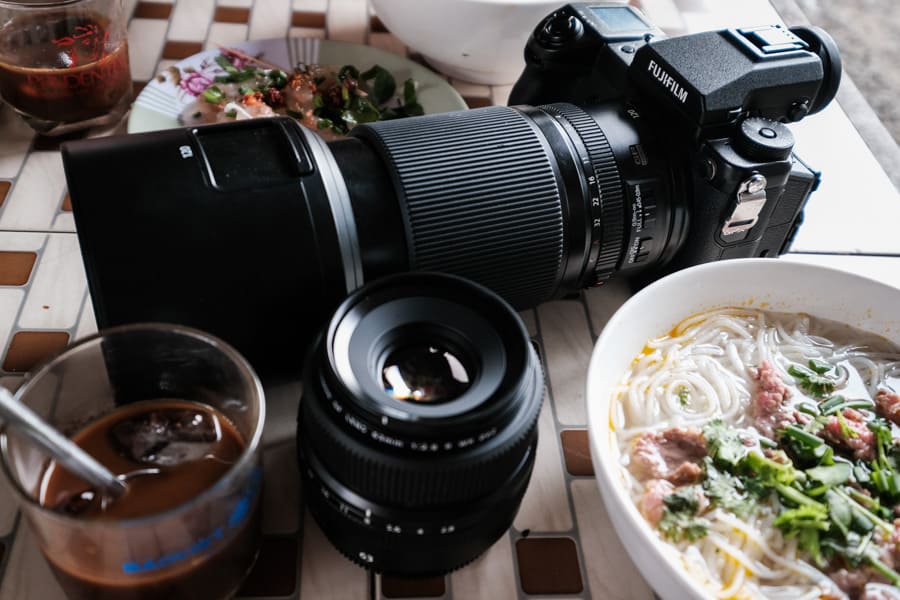
I was just about to start a Central Vietnam photography tour
So his timing was spot on!
I picked up the camera on Saturday afternoon and spent 24 hours with it. During those 24 hours, I noticed 3 important points about using the Fuji GFX 50s. And I thought I’d share them with you, in case you’re interested in trying this medium format mirrorless camera out for yourself.
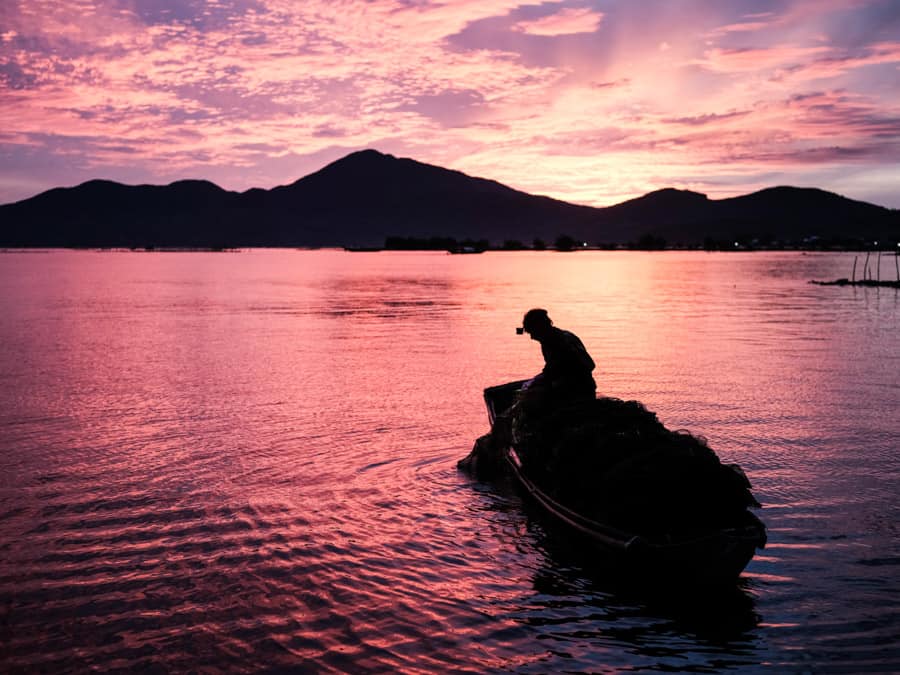
Fuji GFX50s: 3 things to know before you buy
1. It truly is a beast of a camera
The GFX 50s really is a beast. It is way bigger and way heavier than the Xt series cameras, thanks to its huge sensor. This also makes the lens bigger and heavier – so for a moment, it felt like I was shooting with my Canon DSLR again. Only this time, I had a flexible screen that I could use in a much more efficient way than a DSLR.
Having a huge sensor means having more megapixels. In fact, the GFX 50s clocks up an incredible 51.4 megapixels. Which means bigger images and more detail – great for landscape or commercial work, like I mentioned before.
Unfortunately, this impressive megapixel figure comes at a cost: namely, the camera’s hefty size and weight.
If you are familiar with the Fujifilm Xt series, handling the GFX 50s will be no mean feat. And actually, it feels very familiar, having all the dials on top in the same way that the Xt3 does. (However, a few buttons are in different places – for example, the exposure/focus lock button – and it took me a few hours to be able to find the button automatically, without needing to look at the camera to press it.)
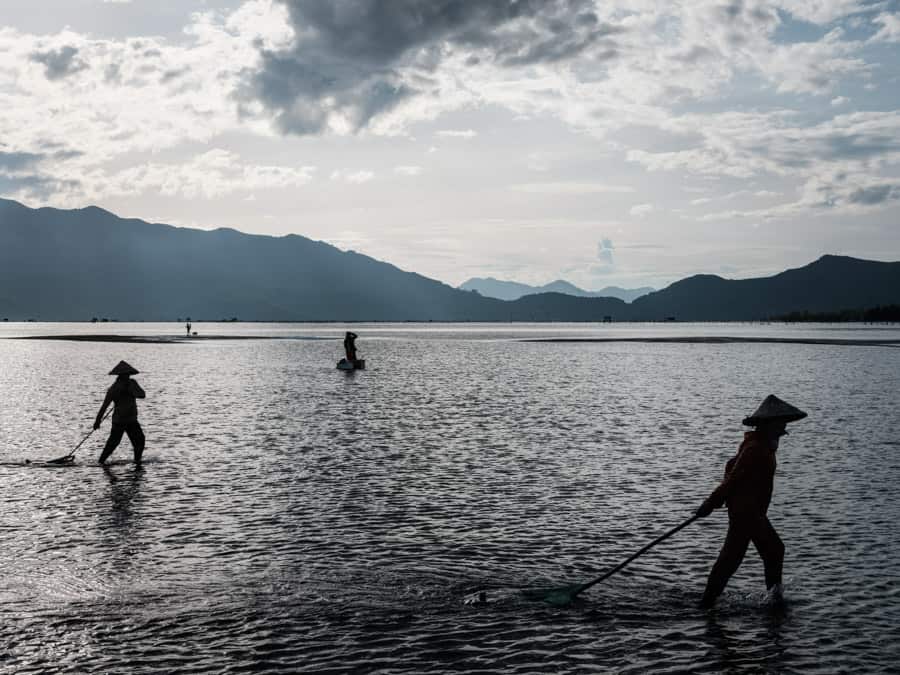
Aside from the above point, the GFX 50s does have a distinctly Fuji feel to it. The film simulation modes are still there. The flexible manual white balance is super fun to play with while shooting. Even the menu remains the same.
After just 30 minutes shooting with this camera over Lang Co lagoon at sunset, I got a good handle on it. And, once I’d gotten the hang of it in this way, I didn’t need to really think about what I wanted to do. (I did, though, have to think way harder not to drop it in the lagoon…with a price tag of about $6,000, this is not the camera you want to take for a splash in the waves!)

2. It has an improved dynamic range
Looking back on the images I took over the weekend, I can see how much the dynamic range of the Fuji GFX 50s medium format mirrorless camera has improved. Because, thanks to the number of pixels provided by its monster sensor, I managed to capture much more detail in the highlights and the shadows – even when shooting jpg.
Since I often shoot against the light – trying to find the middle exposure to get detail in my highlights and shadows – this is, to me, the biggest advantage of this camera. As you can see in the image below, there are quite a lot of details in the sky and on the boat. I do not believe that my Xt3 would have captured such a level of detail.
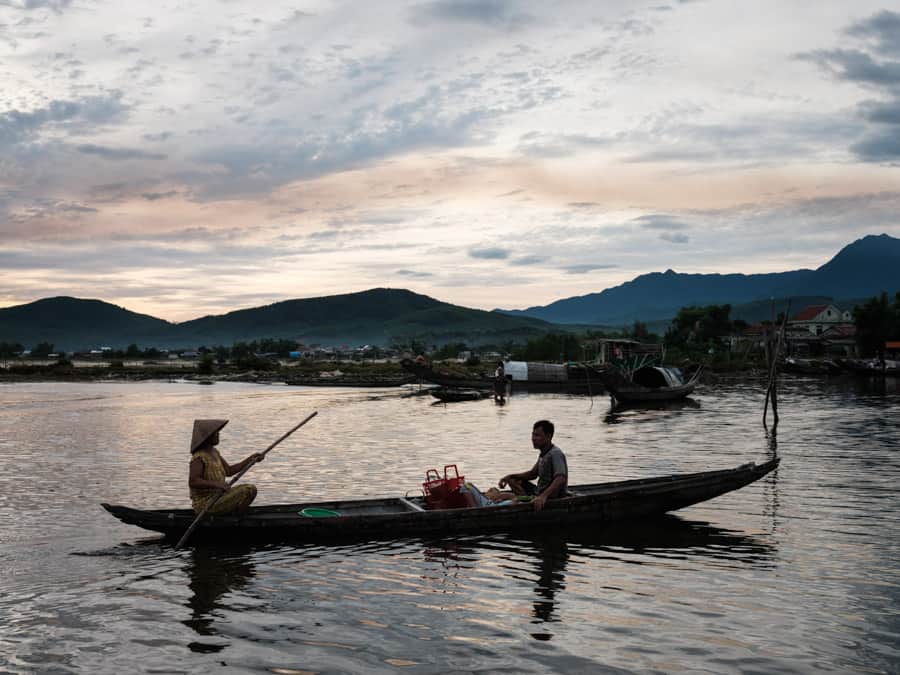
Having bigger images and an improved dynamic range is great – but what about everything else? After all, I’m not a landscape photographer. I don’t really care about my dynamic range or how big my pictures are. They’ll mostly be consumed on this website and of course, on social media.
So would I ever consider buying a camera from the GFX series?
3. It’s not the best Travel Photographer camera
After using the Fuji GFX 50 from Saturday through to Sunday, I came to the following realisation: It was a fun weekend, and I would do it again in a heartbeat, but this isn’t the camera for me.
When thinking about megapixels, 51.4 megapixels make the GFX 50s .jpgs a little over 8,000 pixels in the long edge.
Whereas my Xt3 scores over 6,000 pixels in the long edge. So that makes the GFX 50s’ images just 2,000 pixels longer than the Xt3. Is it really worth it?
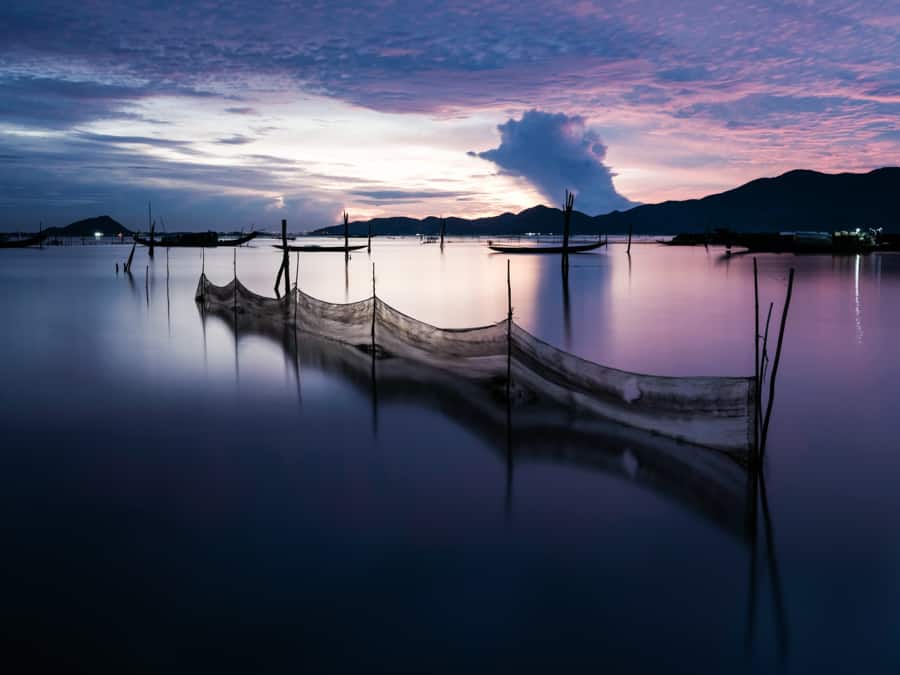
Obviously, I’m not talking about the RAW file here; only the .jpg. But because I normally shoot .jpg, I wanted a fair comparison between the Xt3 and the GFX 50s. And shooting RAW with the GFX would have been unfair to my lovely Xt3!
And another thing: The autofocus isn’t as close as that of the Xt3’s. Being a people photographer in Asia who loves to photograph busy and dynamic situations, having a camera with a slow autofocus is far from ideal.
In fairness, I know that this camera hasn’t been designed to capture chaotic situations like local markets. That it’s more suited to a commercial or studio photographer. And Fujifilm does have an amazing line of cameras that do the former very well, such as the newly improved Xt3.
The continuous focus (Af-c) definitely didn’t work for me – particularly in the lagoon, when trying to focus on moving subjects in backlit situations. (I know, I know – I was asking a lot of the poor camera!)
The eye detection, though, was pretty on point – allowing me to capture a few portraits of moving people.
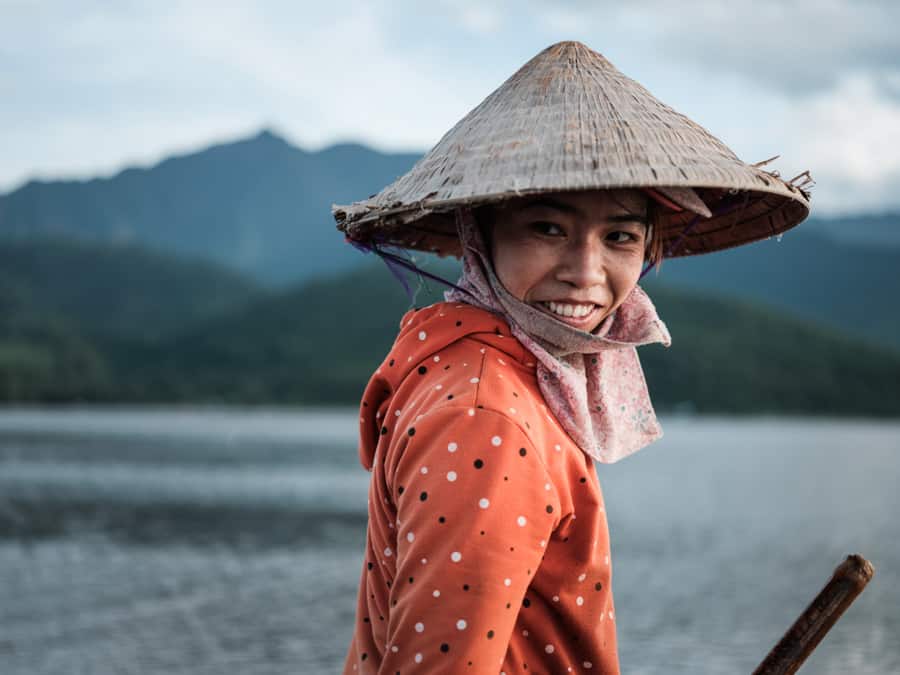
My final point is about its size – which does definitely matter, in this case!
Have you seen how big this camera is? I felt like being a DSLR shooter again, which I could’ve done without!
The lenses are huge, too – especially when I put on the 120mm lens. I could feel my subjects around me feeling more shy, more exposed when I approached them. Since I normally use a mirrorless camera with small prime lenses, I can really tell the difference. And when your job is to photograph people and make them feel comfortable while doing so, it really is a huge difference.
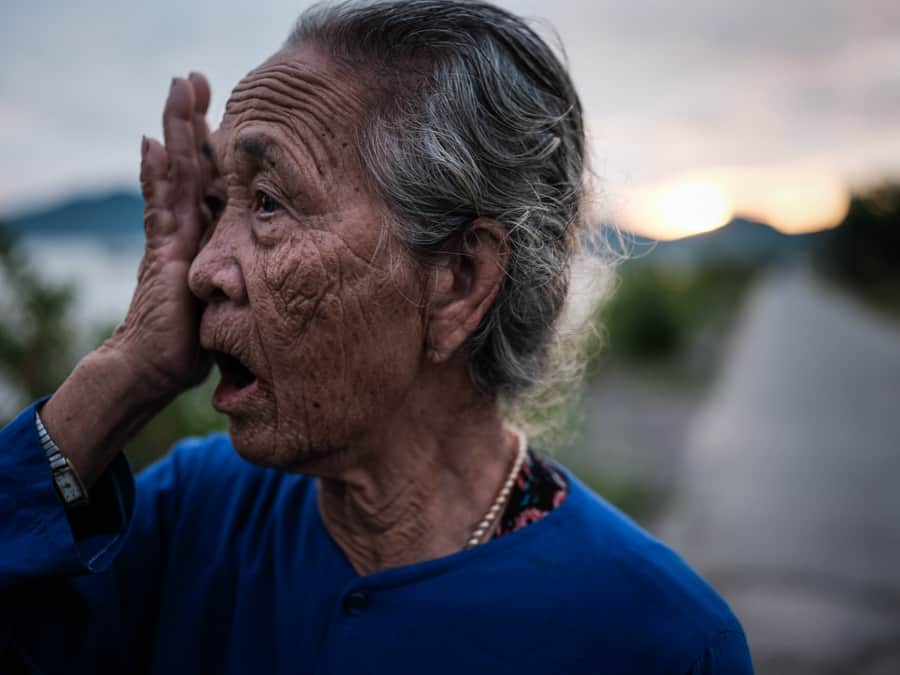
Conclusion: I’ll stick with the Fuji Xt series
Maybe one day I’ll get into landscape photography. Or maybe I’ll be able to afford a GFX camera to photograph hotels and resorts with more detail in my images.
But at the moment, being a very happy Xt series shooter, I do not see the point of carrying this camera around. It means an extra bag – and not a small one, at that! It means new lenses, new batteries…and a new way of shooting.
Because this camera is bigger and slower – meaning it forces you to slow down in the way you take photographs. And I do not want to slow down.
I take photos of market situations when 12 people move into my frame at once. I need to shoot, and I can’t slow down. I need my autofocus to be on top, in any situation. As a people photographer in Asia, this is really important to me.
But of course, it may be different for you! Fee free to get in touch and share your own experiences of using the Fuji GFX 50s – what you like, what you don’t, and the situations in which you find it most useful.
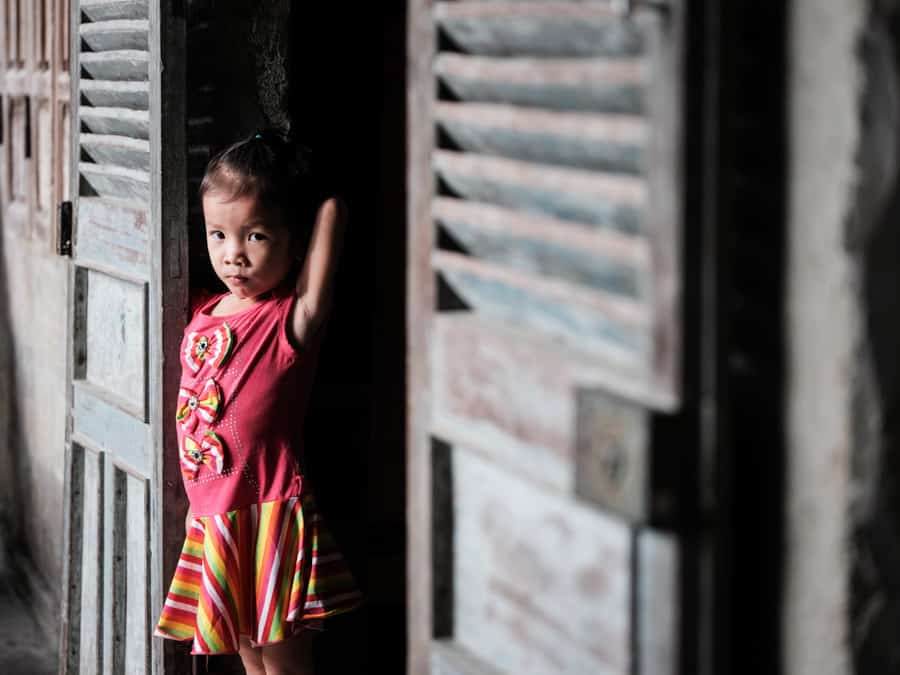

Good read, glad to be back receiving your posts
cheers
Susan